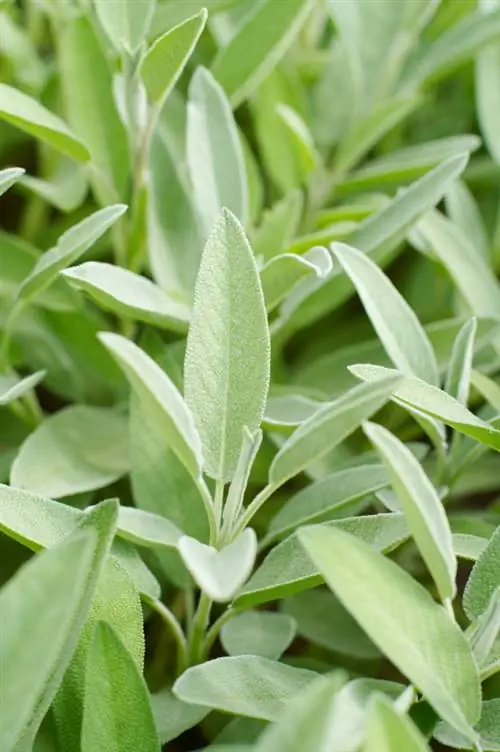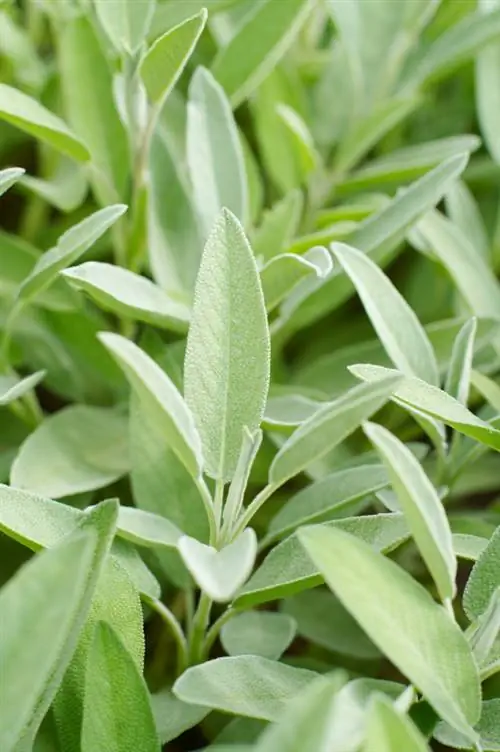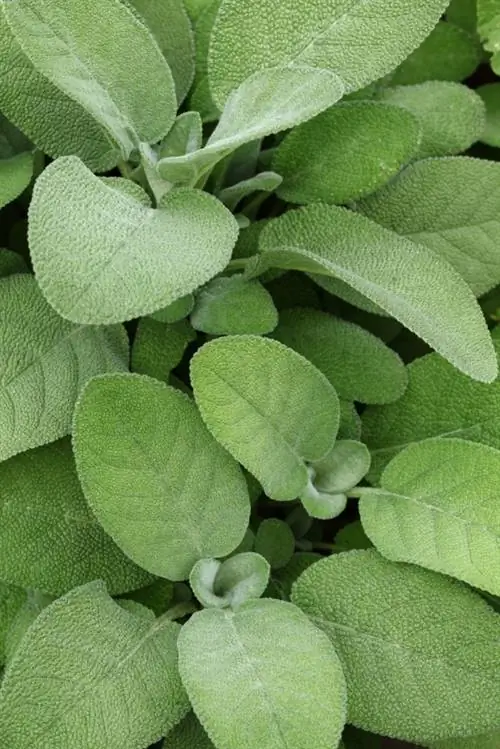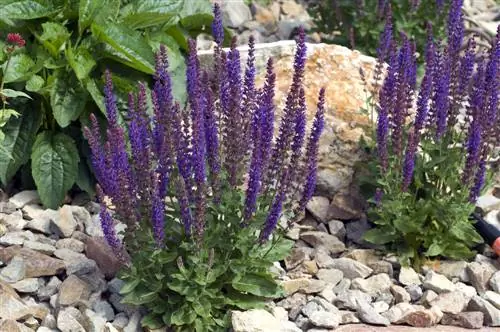- Author admin [email protected].
- Public 2023-12-16 16:46.
- Last modified 2025-01-23 11:20.
In order for sage to thrive in your garden, the plant requires careful care. Dive into the crucial basics about a balanced water and nutrient balance, correct cutting and wintering.

How do you care for sage properly?
To properly care for sage, water young plants regularly and fertilize them every two weeks. Cut the shoot tips for a bushy plant and take care of overwintering. Watch out for diseases and pests that can affect the plant.
How should sage be watered correctly?
As a typical plant of the Mediterranean climate, sage has adapted perfectly to dry weather conditions. Well-established specimens therefore make do with natural rainfall. In the juvenile stage, however, the water requirement turns out to be relatively high. The following tips provide more information:
- Water young plants regularly in dry conditions
- water additionally after each cut
- Let the soil dry thoroughly between waterings
- The water requirement of a plant is higher in a pot than in a bed
Does the plant need fertilizer?
Real sage extracts nutrients from the soil at a medium level. Therefore, fertilize the herb plant every 2 weeks from May to August with compost (€10.00 on Amazon) and horn shavings. If you care for the sabi herb in the bucket, it is advisable to give it organic liquid fertilizer.
When and how is sage cut?
In order to properly care for the evergreen subshrub, the right cut proves to be the pivotal point. To ensure that the shoots with their aromatic leaves do not become woody, you should heed the following tips:
- prune the plant regularly from the start
- prune a few additional shoot tips with every harvest
- never cut into the woody area
- cut off the buds before flowering in June
- Alternatively, let sage bloom and then cut it
- do not cut or harvest the plant from mid-August
The main cut should be carried out in early spring when it is no longer freezing. Remove the withered leaves and shorten the branches to 15 centimeters.
How does wintering succeed?
So that you can care for sage for several years, the plant should survive the winter undamaged. Real sage can withstand temperatures down to -10 degrees, while tropical species are not hardy. Use the following tips to do it right:
- Before the first frost, cover the plant with leaves, straw, sticks or jute
- cover a pot with bubble wrap and place it in front of the south wall
- alternatively, overwinter in the house in a bright place at 5-10 degrees Celsius
- water every now and then so that the root ball doesn't dry out completely
In a mild winter, the chances of a consistent harvest are good because it is an evergreen plant.
What diseases and pests are threatening?
If you care for sage professionally, you rarely have to worry about diseases or pests. If he alth problems arise, the usual suspects are behind them, such as mildew, verticillium and aphids.
Tips & Tricks
Use sage as a decorative and effective border. As has been discovered through dedicated observations, the scent of sage is effective at repelling voracious snails, caterpillars and other creatures.






